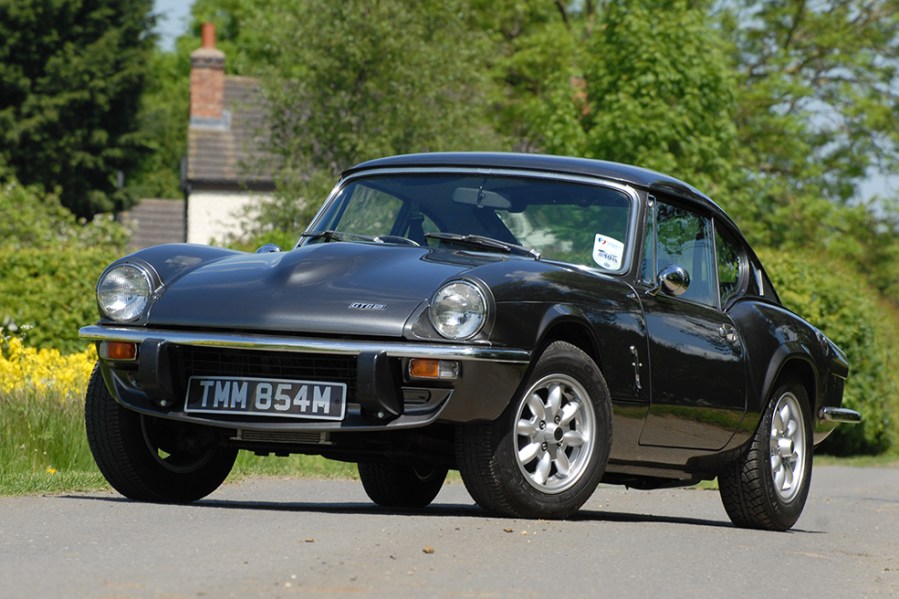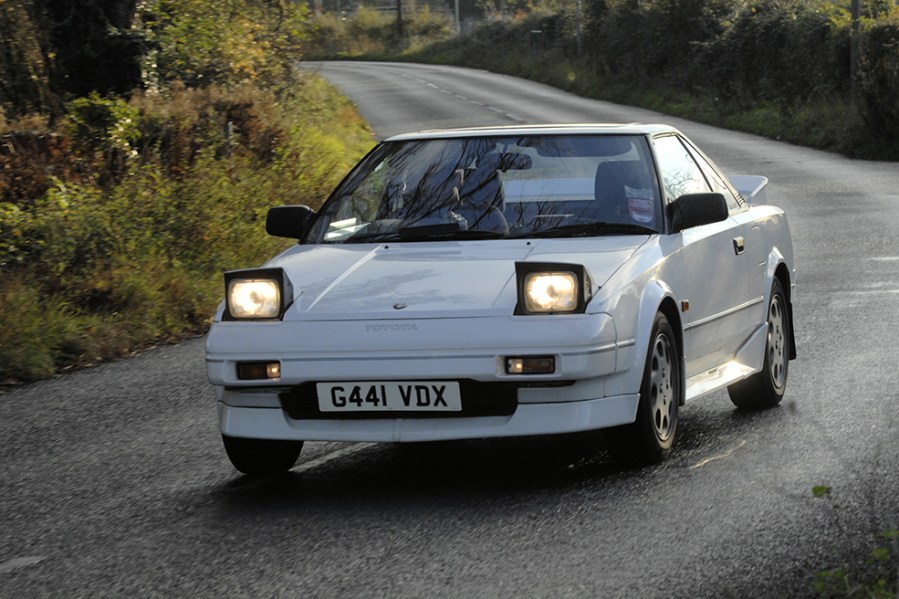The upper end of a four-figure budget opens up a world of classic car temptation. Here are our favourite classic cars under £10,000
Words: Jeff Ruggles, Joe Miller, James Howe, Paul Wager, Phil Weeden
As serial browsers of classifieds sites will know, you don’t have to spend a fortune to find a good classic car these days. While the bargain basement isn’t quite as bountiful as it once was, spending as little as £2000 can secure some great old cars. Stepping up to around £5000 opens even more possibilities, while setting filters for a £10,000 budget will see search results filled with icons from the 1950s right through to the early 1990s and 2000s.
To help you on your quest for your perfect match, here are the best classic cars under £10,000.
Mercedes W123
You could make a very good case for the Mercedes W123 being ‘peak car’ – yes, cars got faster, safer and more technologically-advanced later on, but there weren’t any significant jumps across the board that would really justify a later car unless you specifically wanted one. Built at a time when Mercedes produced cars up to a standard rather than down to a price, the W123 was fantastically solidly built and well-engineered, boasting quality and durability that shrugs off hundreds of thousands of miles in all conditions and climates. The satisfying clicks of all the switchgear, the reassuring thud when you close the door, the way the long-travel suspension irons out bumps; it feels tank-like and genuinely invincible.
Designed as an upmarket executive car, it’s also more than capable on modern high-speed motorways in even its least powerful guise, sitting at 70mph while boasting excellent comfort and refinement for any car, let alone one that turns 50 next year. The powerplants range from solid four-pot and lusty straight-six petrol engines to unburstable diesels, while the options of a W123 saloon, S123 estate or C123 coupe – all available within the £10,000 budget – offers something for everyone.
The W123 was a winner from day one, amassing a 12-moth waiting list almost immediately and ultimately selling nearly 2.7 million units. What’s more, once they were done being Autobahn-crushers or executive expresses, many 123s were exported to developing countries where they lived out hundreds of thousands more miles with only basic maintenance, lapping up rough roads and poor-quality fuel and continuing to deliver fault-free service.
That iconic status rings true today, with legions of fans worldwide. True, rust can take hold pretty much everywhere, but that’s yet another benefit of the W123’s enduring popularity – not only does it mean new panels for all the trouble areas can be easily – and often affordably – sourced, but a £10,000 budget buys you a nice example in pretty much any spec you fancy bar the sought-after 280CE coupe.
Triumph GT6
When spending £10,000 on a classic car, many will want something which looks sporty, sounds the part and has decent performance. The Triumph GT6 certainly fits that remit with its ‘baby E-type’ appeal. Before the Jaguar purists raise their arms in horror, consider the basics: straight-six engine, hatchback rear and long pointy bonnet, all at a price point far more accessible than even the ropiest E-type.
At its heart, the GT6 is essentially a hardtop Spitfire with a Vitesse engine, the car being created as a way to cash in on the Le Mans success of the Spitfire racers but with the extra pair of cylinders helping to offset the additional weight of the metal roof.
As for which model to choose, the GT6 line-up can get confusing; Launched in 1966 and produced until 1973, the car was known back in the day for its sometimes tricky on-the-limit handling, the result of the simple swing-axle design which created big camber changes under acceleration and deceleration, leading in turn to a ‘jacking up’ effect at the rear if the driver braked heavily into a bend. Triumph revised the design for the Mk2 in 1968, reversing the lower wishbones and adding metal-and-rubber Rotoflex ‘doughnut’ couplings to the driveshafts.
Alongside styling changes, the GT6 Mk2 also introduced an uprated 104bhp engine spec mirroring the Vitesse Mk2, but in 1970 a more significant facelift would see the GT6 take on the appearance of the Spitfire IV, including the Kamm tail. Right at the end of the car’s life, the suspension would be tweaked again, this time employing a ‘swing spring’ solution which mounted the transverse leaf spring on a pivot. Today, many GT6s have received upgrades to the suspension, including a full CV joint conversion, but in reality you won’t drive a cherished classic hard enough for the handling to become an issue, and they’re great fun.
You should be able to bag a project for as little as £5000, but between £8000 and £10,000 there are plenty of respectable examples ready to enjoy. Tremendous parts support from the network of Triumph specialists makes them an easy car to own and a rewarding project to use and improve.

TVR Chimaera
The TVR Chimaera was a slightly more approachable take on the Blackpool firm’s traditional sports car recipe, but was still light, fast and raw by contemporary standards, with no ABS or traction control and a 4.0-litre Rover V8. The engine grew to 5.0 litres over a number of iterations from the car’s launch in 1992, until its eventual replacement over 10 years later in 2003, with power ranging from 240bhp to 340bhp.
The Chimaera shared the same chassis and fibreglass construction as the hardcore TVR Griffith, but was longer and more practical, with softer suspension for better long-distance touring credentials. The cabin was trimmed with leather, offered the driver a great low-slung driving position and predates some of the Blackpool firm’s more madcap designs. Its broader appeal was key in helping the Chimaera to become TVR’s best-selling car; over 6000 were made, so there are still plenty available on the used market even two decades after production ended.
The usual TVR issue of rusty chassis outriggers is a common issue here, but the Chimaera’s fibreglass panels means body corrosion isn’t a worry; similarly, while the famous Rover V8 is known to suffer camshaft issues, it’s a generally reliable unit that will deliver great performance (and sound) given regular maintenance.
Remarkably, despite the TVR’s breadth of talent and appeal, prices remain reasonable. While securing the best will require a step up into our next budget category, look carefully and you’ll still find a few examples for our budget – or less if you don’t mind a project. Much like the MGB, the TVR enjoys comprehensive specialist and parts support in the UK, which should make the ownership experience as easy as possible.
Toyota MR2 Mk1
The Toyota MR2 Mk1 is the epitome of 1980s cool. These mid-engined marvels could be had for not much more than a grand a few years ago; the trouble was, by then, many had succumbed to the dreaded tin worm and the cost of repairing such examples was financially prohibitive. So, while the values of these early MR2s have rocketed in value of late, the good news is that most should be in excellent condition.
That sub-1000kg kerb weight is split roughly 50:50 thanks to the mid-engined layout. Allied to the glorious 1.6-litre 4A-GE 16-valve motor, complete with variable valve timing, this MR2 can sprint to 60mph in around eight seconds and hustle a B-road with the best of them. Toyota replaced it in 1989 with a new model that was heavier and less exciting to drive, so the Mk1’s reign as the better driver’s car stayed intact until the Mk3 arrived 10 years after that.
There’s a great club in the UK supporting all three generations of the MR2, and indeed it’s pretty busy this year celebrating 40 years of the W10 first-generation model and 35 years of the W20 second generation model.

Austin-Healey Sprite
Any Austin-Healey ‘Frogeye’ Sprite at this price point will not be concours but that’s no bad thing. It’ll probably have blistered chrome, a few paint issues and panels that don’t have the neatest gaps. You should, however, be able to find one that’s solid and on the road, meaning you can enjoy it without needing to be too precious.
Enjoyment is what the Austin-Healey Sprite is all about, with a great balance of lively performance and minimal running costs at the root of its conception. To realise this aim, BMC renewed its partnership with the Healey Motor Company that had proved so fruitful in producing the 100; Healey would deal with design and engineering, while BMC would provide the oily bits. That’s why the Frogeye ended up with Austin A35 running gear, as well as a Morris Minor steering rack. It also featured the venerable 948cc A-Series that had appeared in both cars, but with twin carbs to boost power to 43bhp.
Aesthetically, the Frogeye was unique. The one-piece bonnet with its upright headlamps provided superb access to the engine bay, while the lack of a bootlid and external door handles added to the smooth look. Built at MG’s Abingdon factory and launched in May 1958 to coincide with the Monaco Grand Prix, it instantly became a hit, and by the time production ceased in 1961, a total of 49,000 had been sold worldwide.
Although you’d expect a £10,000 Sprite to be a little more careworn than a £20,000-plus show car, make sure you check thoroughly for corrosion and poor repairs that may have compromised the monocoque. Yes, such a budget will likely get you a far nicer example of the later 1961 to 1971 Sprite or the MG Midget. However, with the classic market suffering a bit of a lull, a glance at recent auction results suggests that an original Frogeye is now more achievable than it has been for years. That seems like an opportunity not to be missed.
![]()





